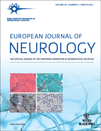Differences in odor identification among clinical subtypes of Parkinson’s disease
Abstract
Objective: Olfactory dysfunction is a non-motor symptom in idiopathic Parkinson’s disease (PD). We investigated whether this dysfunction differs among clinical subtypes of PD.
Methods: Participants comprised of 90 patients with idiopathic PD and without dementia. Olfactory function was evaluated using the odor stick identification test for Japanese, which evaluated the detection of 12 odorants familiar to Japanese participants. Patients were divided into tremor-dominant type (TDT), akinetic-rigid type (ART), and mixed type (MXT) PD subgroups using part III of the Unified Parkinson’s Disease Rating Scale.
Results: Fifty-five patients were classified as ART, 21 as MXT, and 14 as TDT. There were no differences in age, sex, or duration of illness among the subtypes. Subjective symptoms of impaired sense of smell were significantly higher (P < 0.05) in the ART than in the TDT. Mean odor identification score was 4.3 in the ART, 5.2 in MXT, and 6.6 in TDT. It was significantly lower in the ART than in the TDT (P < 0.01).
Conclusion: Olfactory dysfunction differed among the clinical subtypes of PD. This suggests that olfactory function might relate to prognosis of patients with PD.




